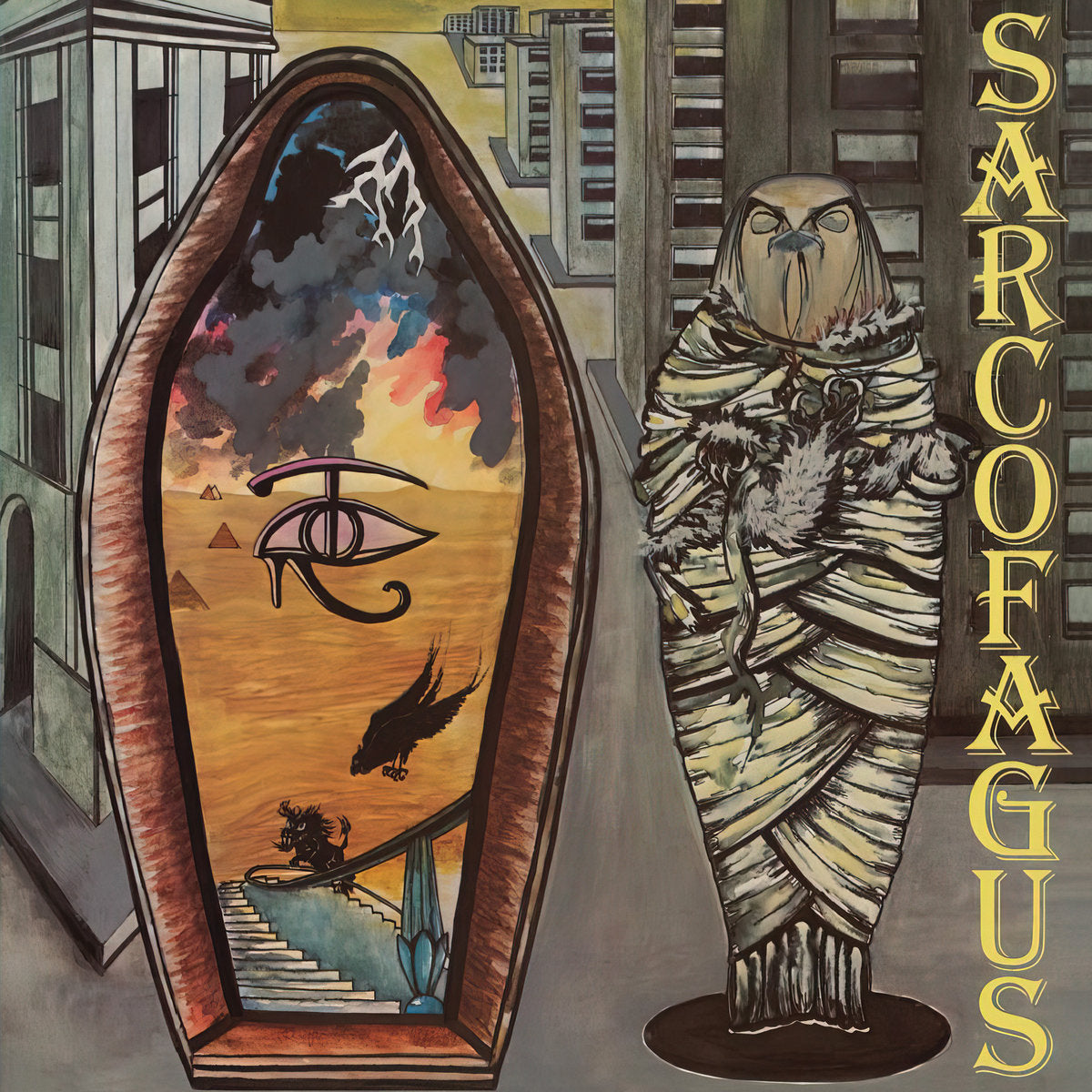Nuclear War Now!
Sarcofagus - Cycle of Life
- Regular price
- £32.00 GBP
- Regular price
-
- Sale price
- £32.00 GBP
- Unit price
- per
Couldn't load pickup availability
ANTI-GOTH 593
Though they’re often described as Finland’s first heavy metal band, Sarcofagus’ place in the broader context of metal’s emergence in late 1970s and early 1980s is arguably more significant. For perspective, consider the fact that Sarcofagus self-released their first EP in 1979—the same year as Iron Maiden’s “Soundhouse Tapes” EP. The next year saw the release of not just one, but two full lengths, “Cycle of Life” and “Envoy of Death.” Not only did they make an early arrival on the scene, the albums they recorded in 1980 were musically and thematically far ahead of their time. Recorded onto 8-track over three days at Pan Studio in Helsinki, “Cycle of Life” was an ambitious debut, establishing Sarcofagus among the heaviest bands of that era while simultaneously stretching the bounds of the emergent genre. The first five songs on “Cycle of Life” form what is essentially a “concept album,” despite only spanning the first side of the record. The songs follow a single narrative, telling the story of a man who, believing himself to be an incarnation of Horus, the ancient Egyptian sky god, is deemed insane and confined in a mental hospital. Pursuing suicide as his only means of escape, he kills himself only to be reincarnated and condemned to suffer life once again. The theme of suicide proved controversial, resulting in at least one claim by a parent, albeit unsubstantiated, that a teenager killed himself after listening to the album. These tracks, written by guitarist Kimmo Kuusniemi—the only consistent member of the band—feature Sarcofagus’s more aggressive heavy metal sound as well as the progressive and experimental elements that set them apart. Frantic drums and twisting, helical bass lines undergird the tracks, commanded by Kuusniemi’s heavy guitar riffs sheathed in brittle, low end distortion. Reckless, chaotic guitar solos and synthesizer accents by keyboardist Esa Kotilainen fill out the space, adding eccentricity to the material. The side culminates in a three-minute psychedelic collision of experimental tape manipulation, effects, and electronics that concludes with the sound of a crying baby representing the protagonist’s rebirth. The second side bears a greater influence of the band’s other founding member, vocalist Hannu Leidén, who was more oriented toward hard rock and whose subsequent departure enabled Kuusniemi to shift the band into a higher gear for the “Envoy of Death” album. But although the second side is slightly less intense, it remains mostly heavy and always stylistically intriguing.
- J. Campbell
Share


